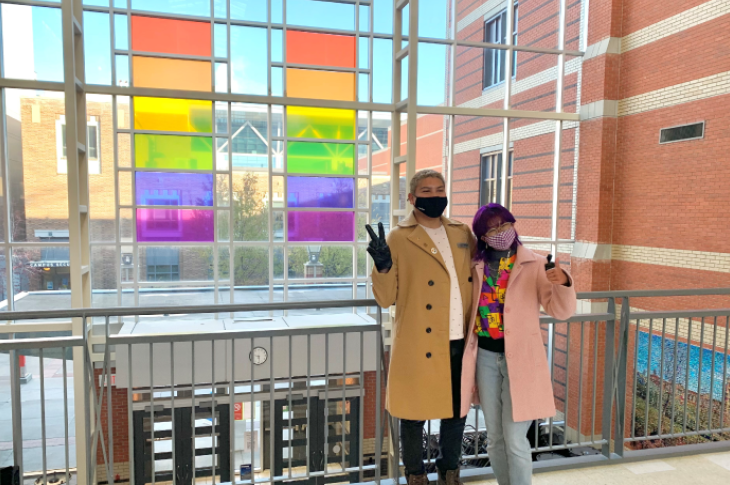GROWING NEXT GEN RAILROADERS: An Alberta polytechnic puts EDI front and centre
Posted onThe Calgary campus of the Southern Alberta Institute of Technology (SAIT) offers some spectacular views of both the city and nearby mountains.
Home to a leading-edge School of Transportation that’s producing the railroaders of tomorrow, SAIT also proudly acknowledges the roots from which it – and Canada – have grown.

Oki, Amba’wastitch, Danit’ada, Tân’si, Hello. We would like to acknowledge that SAIT is located on the traditional territories of the Blackfoot Confederacy. The city of Calgary encompasses a region that the Blackfoot tribes of southern Alberta described as Moh’kinsstis, meaning “Elbow”, in reference to its location at the confluence of the Bow and Elbow rivers. Since time immemorial, this region was a traditional gathering place for the tribes of the Blackfoot Confederacy. We are meeting/gathered on the traditional territories of the Blackfoot Confederacy, which today encompasses the Indigenous peoples of the Treaty 7 region in southern Alberta: the Siksika, the Piikani, the Kainai, the Tsuut’ina , the Stoney Nakoda First Nations, the Northwest Métis Homeland – Region 3
The text above is the land acknowledgment included in outgoing SAIT emails. It is just one example – the “bare minimum,” says a school official – of the many ways SAIT is Indigenizing its campus in an Indigenous-led process that itself is supported in parallel by a broader approach to equity, diversity, and inclusion (EDI) at SAIT.
“A healthy campus is one where all students, staff, faculty belong, but especially equity-deserving groups,” says John Partington, SAIT’s Director of EDI.
Partington says the school is pursuing different approaches to get to that belonging, each rooted in respect for the individual and data.
“It takes time to close gaps, to remove barriers to success, and ensure equitable outcomes when it comes to program completion for certain groups. But it starts with data and getting an accurate picture of the scope of the challenge,” says Partington.
Partington says EDI is far from an “administrative checkbox” at SAIT. It involves new approaches to recruiting, mentorship, education and training, peer-to-peer relationships, alumni relations, and outreach to industry.
Partington says one of SAIT’s true EDI champions is Lynda Holden, currently the interim Dean of the Schools of Manufacturing and Automation, and of Transportation.
“At the School of Transportation, leaders are change agents,” says Partington. “Industry needs dictate and the school has responded with more apprenticeships, getting more women into trades programs, and exploring pathways for traditionally underrepresented groups to graduate and get great jobs.”
He adds: “They role model desired behaviours, focus on inclusive leadership and inclusive classrooms, and industry is responding.”
Industries including rail, he says, are realizing success requires companies to tap every well of talent they can. As more and more talented trainees emerge from institutes like SAIT, the talent wells are getting deeper all the time.
“At SAIT, a healthy campus is when everyone feels welcomed, supported, included, valued and empowered to succeed. For all our graduates, we hope that carries over into the world of work.”
